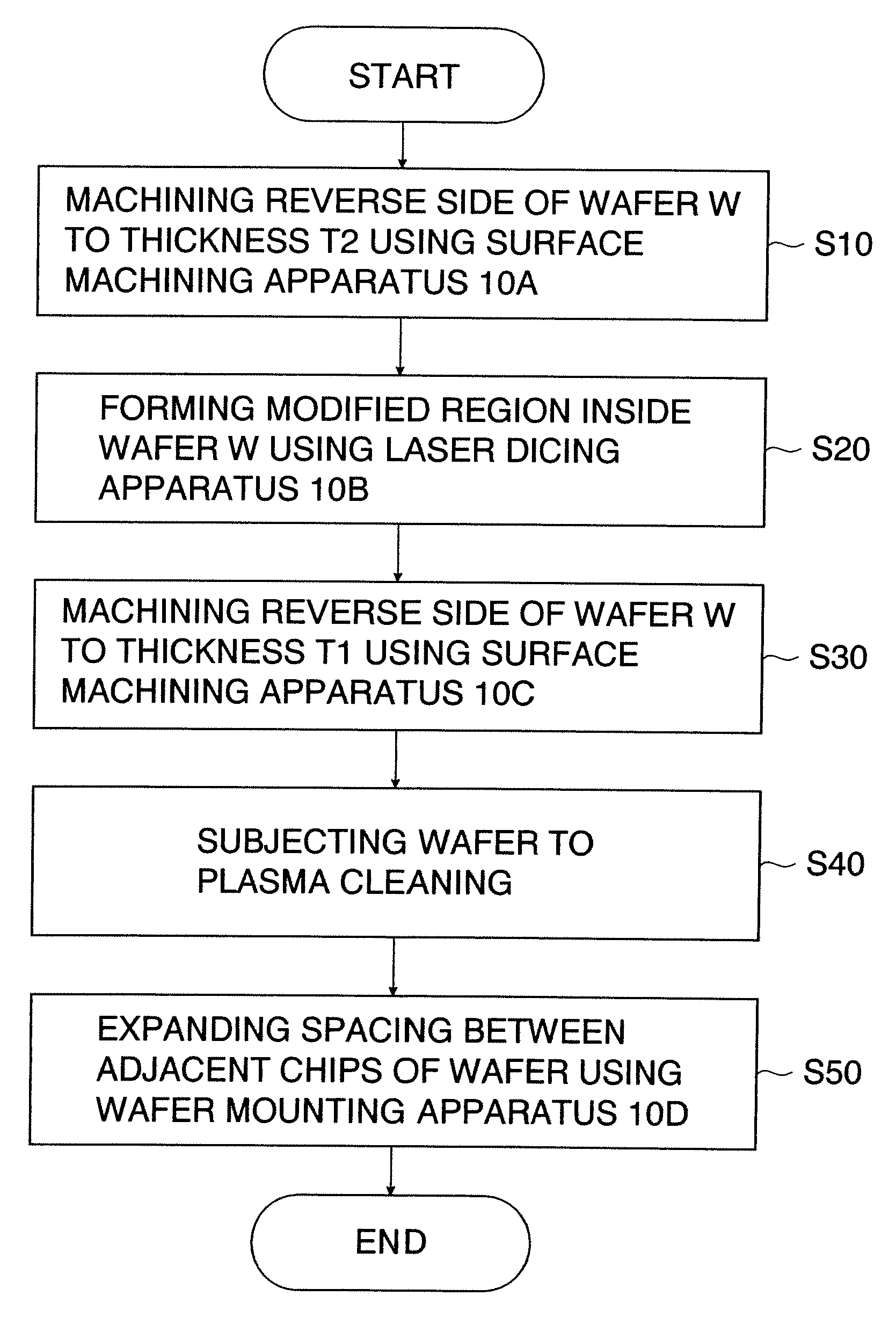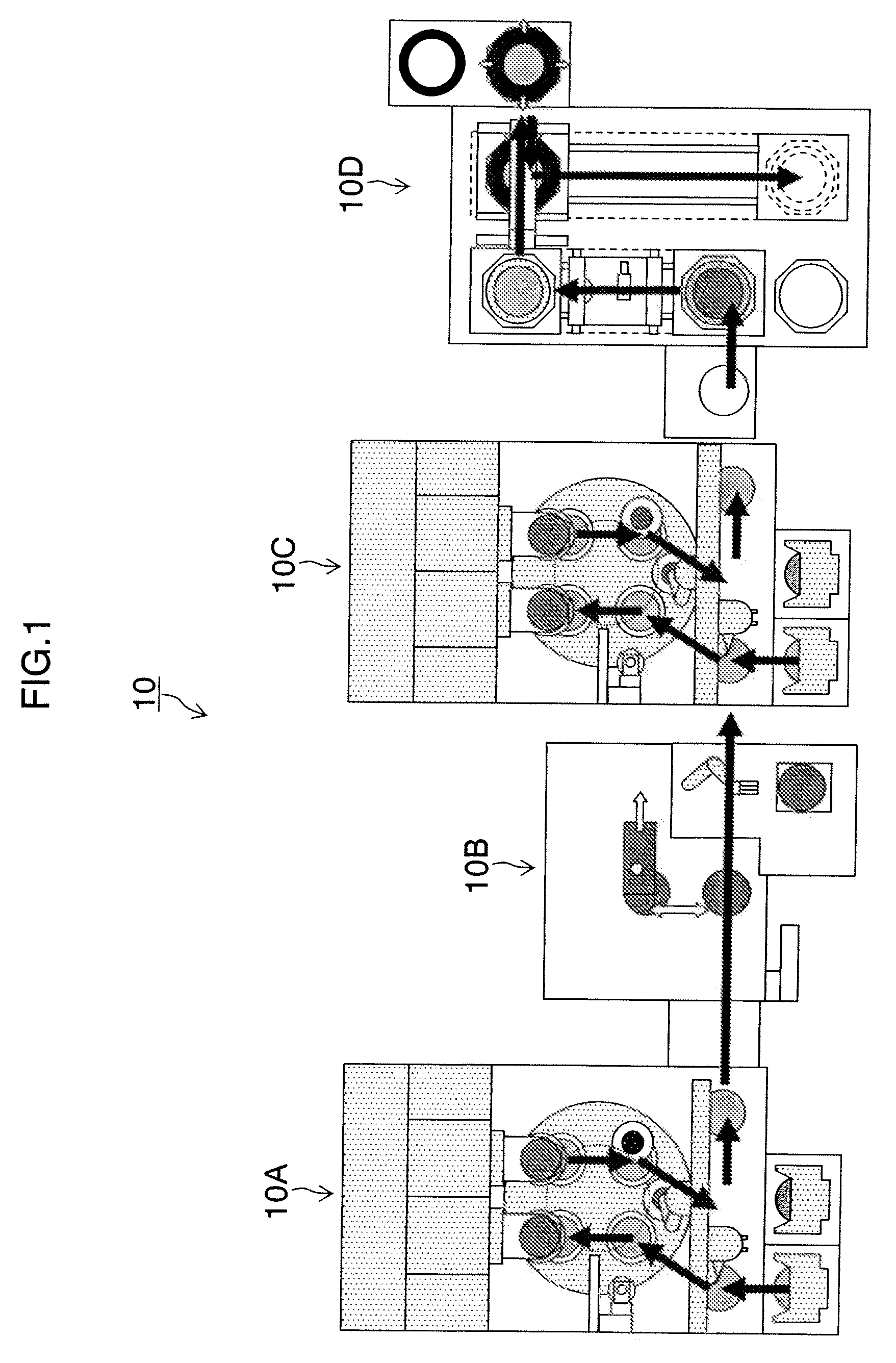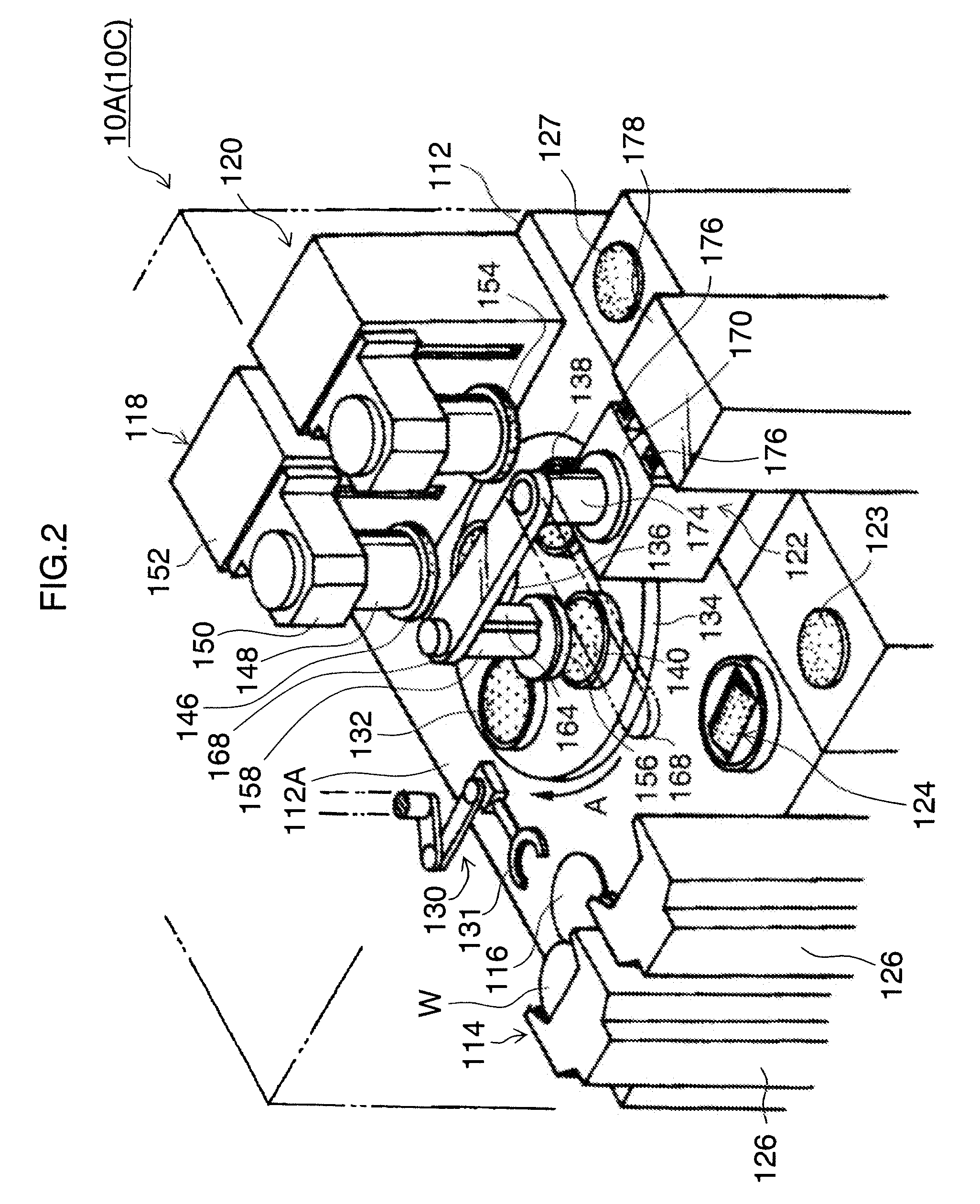Wafer Working Method
a working method and wafer technology, applied in the field of wafer working methods, can solve the problems of inability to handle as a wafer, the wafer is undesired to be broken up from the inside modified region, and the number of defective chips produced
- Summary
- Abstract
- Description
- Claims
- Application Information
AI Technical Summary
Benefits of technology
Problems solved by technology
Method used
Image
Examples
Embodiment Construction
[0051]Hereinafter, preferred embodiments of a wafer working method according to the present invention will be described in detail with reference to the attached drawings.
[0052]FIG. 1 is a plan view showing an overall configuration of a wafer working system 10 to which the present invention is applied. The wafer working system 10 comprises, from the upstream side (i.e., left-hand side), a surface machining apparatus 10A, a laser dicing apparatus 10B, a surface machining apparatus 10C, and a wafer mounting apparatus 10D. Description will be made of these apparatuses sequentially.
[0053]The surface machining apparatus 10A is used in a first machining step, and the surface machining apparatus 10C is used in a second machining step.
[0054]It is possible to use one surface machining apparatus 10A (or 10C) in both of the first and second machining steps without the provision of two such surface machining apparatuses as shown in FIG. 1.
[0055]FIG. 2 is a perspective view of the surface machini...
PUM
| Property | Measurement | Unit |
|---|---|---|
| thickness | aaaaa | aaaaa |
| thickness T1 | aaaaa | aaaaa |
| thickness T1 | aaaaa | aaaaa |
Abstract
Description
Claims
Application Information
 Login to View More
Login to View More - R&D
- Intellectual Property
- Life Sciences
- Materials
- Tech Scout
- Unparalleled Data Quality
- Higher Quality Content
- 60% Fewer Hallucinations
Browse by: Latest US Patents, China's latest patents, Technical Efficacy Thesaurus, Application Domain, Technology Topic, Popular Technical Reports.
© 2025 PatSnap. All rights reserved.Legal|Privacy policy|Modern Slavery Act Transparency Statement|Sitemap|About US| Contact US: help@patsnap.com



